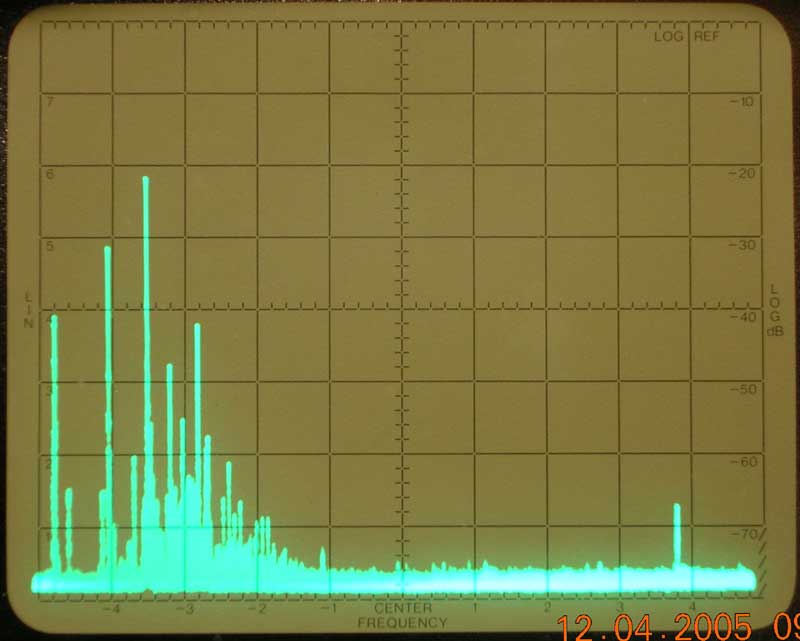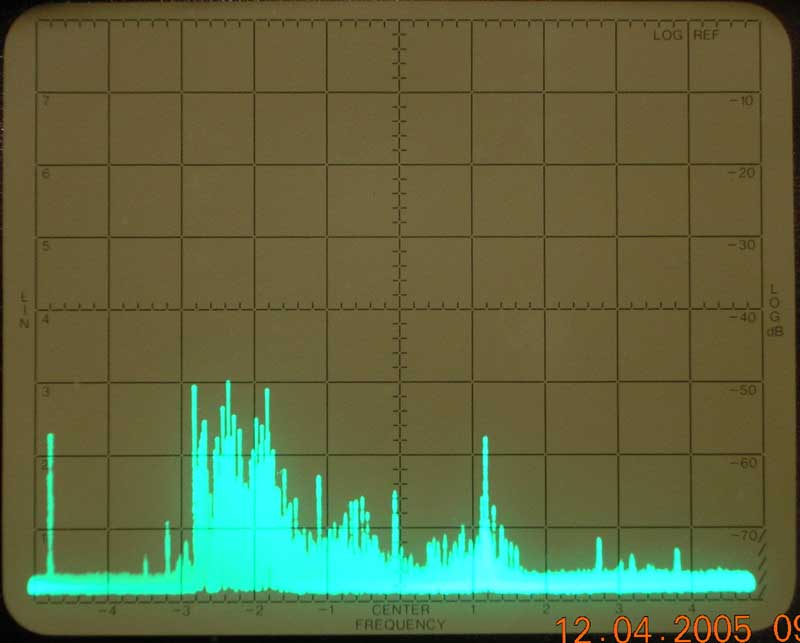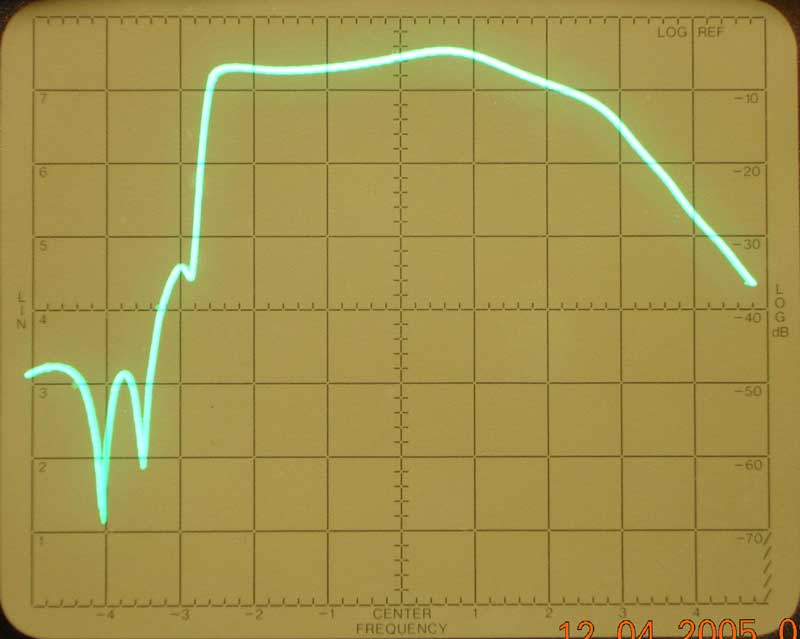Measurements of K9AY filter/preamp
In September of 2005 I installed a pair of K9AY loops using a K9AY switch box and K9AY control box I purchased from WX0B (www.arraysolutions.com). I used a single center mast made from three fiberglass windsurfer masts I had obtained as surplus and made the loops out of #18 enameled wire. The dimensions and orientation of the loops were as described in the K9AY instruction sheets (they also appear on the web).
The performance of this setup was nothing short of stunning when I used it in the 2005 ARRL 160 Contest last weekend. At times I felt I had a beam operating on 160 meters. This is not a report on the loops and the loop performance I and will say nothing more about them here.
Because I had looked at the effect of of an ARR 0.1-30 MHz preamp with and without an 80 meter filter using the signals from my K9AY loops, I decided I would look at the performance characteristics of the K9AY filter/preamp combination as well. (See Effect of band pass filter on K9AY signals )
The figures below were made with an HP-141T/HP-8553B spectrum analyzer using an HP-8443 Tracking Generator. The spectrum analyzer was set so that the top of the display was 0 dBm. The tracking generator output was set for -20 dBm. The analyzer bandwidth was 3 kHz and except for Figure 4 following, the display is set for 0.5 MHz/division with a Center Frequency of 3 MHz.

Figure 1
This figure shows the transmission through the K9AY control box with the filter/preamp turned off. The signals are from my 160 meter vertical the morning after the 2005 ARRL 160 meter contest. The major local BC station is the -22 dBm signal at 1260 kHz. The BC band signals are easy to identify. There are some birdies or harmonics in the 160 meter band (-2.2 <=> -2.0 divisions). There is no transmission loss going through the K9AY control box.

Figure 2
This figure shows the transmission of the K9AY control box with the filter/preamp on. The 160 meter signals have been amplified by about 12 dB and the BC band signals are almost totally missing! A very excellent improvement to the incoming signals. If we think of -73 dBm as being S9, then these 160 meter signals will be about S9+20 dB and there will be no very strong BC band signals to affect the first stages of the receiver. It should be remembered that the K9AY loops will have gains of about - 25 dBi on 160 meters so the signals would be down about 25 dB from what is on the display but still quite strong as far as the receiver is concerned..
The next figure tells us why we see this.

Figure 3
This figure shows the transmission of the K9AY control box with the filter/preamp on and with the signal input from the tracking generator ( -20dBm).
The pass band drops precipitously at the edge of the 160 meter band. (I measured the drop point at 1.77 MHz). The gain across the 160 meter band is 12 dB as noted in Figure 2. Note that the transmitted signal is 30 dB down at 1500 kHz and about 50 dB or more down from 500 to 1300 kHz. This explains why the BC signals are essentially gone in Figure 2.
Since the Center Frequency of Figure 3 is 3 MHz, it is easy to see that the gain across the 80 meter band starts at about 14 dB at 3500 kHz and drops to about 10 dB at 4000 kHz. The signal is down by about 8 dB from the injected signal by 5 Mhz ( +4 divisions) so the filter/preamp is not useful for receiving on 40 meters.

Figure 4
This figure shows the 160 meter band in more detail. The Center Frequency is 2 MHz and display is 100 kHz/division. The 160 meter band starts at -2 divisions and goes to the Center Frequency. You can see that at a frequency of 1700 kHz there is about 2 dB of signal gain relative to the injected signal. and 12 db of transmission loss relative to signals in the 160 meter band. Below 1600 kHz the loss is about 25 dB relative to signals in the 160 meter band.
Overall this is very good performance.
So that there is no misunderstanding about this report, I have absolutely no financial interest or relationship with WX0B or K9AY. We do know each other however and have exchanged reports in many contests.
Tod Olson, K0TO
December 4, 2005